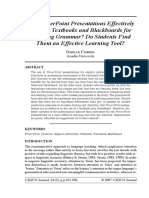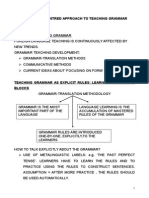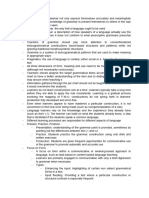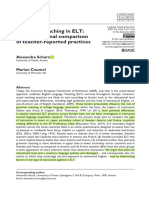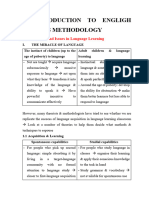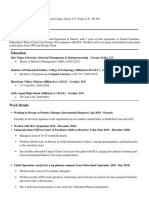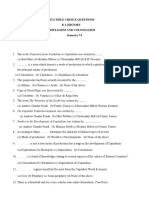0% found this document useful (0 votes)
22 views12 pagesApproaches To Grammar Teaching
The document discusses various approaches to grammar teaching, primarily focusing on the traditional PPP method, which involves presenting, practicing, and producing grammar points. It critiques the limitations of this method, particularly the 'inert knowledge problem,' and explores alternative theories such as Krashen's non-interventionist approach, input processing, and the importance of focusing on form within communicative contexts. Additionally, it highlights techniques like input enhancement, flooding, and output production to improve grammar acquisition in language learners.
Uploaded by
Kairo MonteverdeCopyright
© © All Rights Reserved
We take content rights seriously. If you suspect this is your content, claim it here.
Available Formats
Download as PDF, TXT or read online on Scribd
0% found this document useful (0 votes)
22 views12 pagesApproaches To Grammar Teaching
The document discusses various approaches to grammar teaching, primarily focusing on the traditional PPP method, which involves presenting, practicing, and producing grammar points. It critiques the limitations of this method, particularly the 'inert knowledge problem,' and explores alternative theories such as Krashen's non-interventionist approach, input processing, and the importance of focusing on form within communicative contexts. Additionally, it highlights techniques like input enhancement, flooding, and output production to improve grammar acquisition in language learners.
Uploaded by
Kairo MonteverdeCopyright
© © All Rights Reserved
We take content rights seriously. If you suspect this is your content, claim it here.
Available Formats
Download as PDF, TXT or read online on Scribd
/ 12







